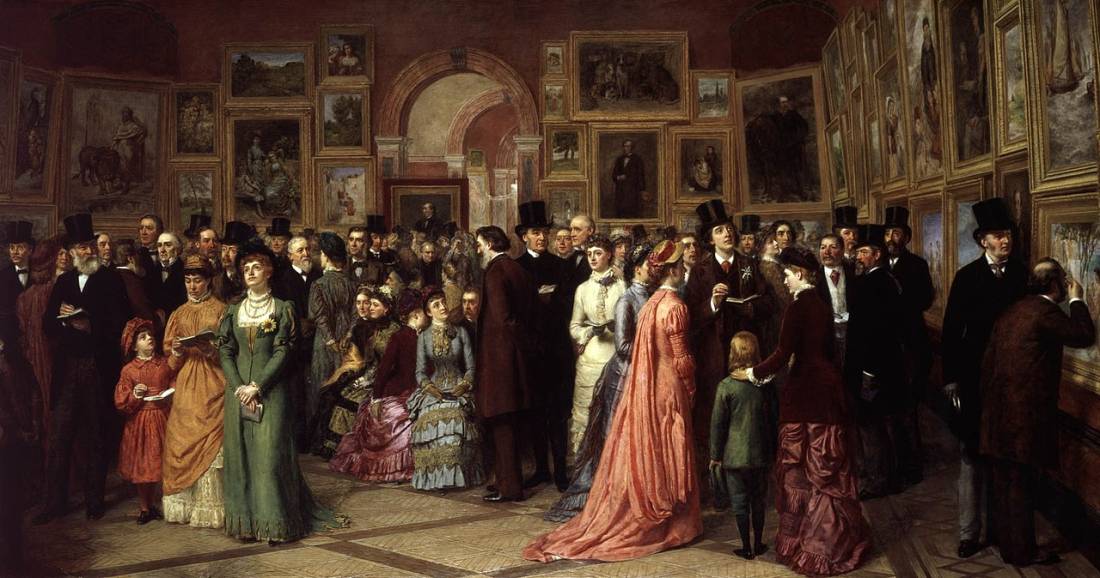
How Much Should You Pay for a Victorian Painting
A Collector’s Guide to Smart Buying, Valuation, and the Modern Market
Victorian paintings, those created during the reign of Queen Victoria (1837–1901), represent one of the most fascinating and diverse eras in Western art. The period witnessed dramatic shifts in style, subject matter, and technique, from sentimental domestic scenes and moral allegories to highly finished Pre-Raphaelite masterpieces. Today, the market for Victorian paintings remains vibrant but complex. Prices vary enormously depending on factors such as artist reputation, condition, provenance, subject matter, and even current décor trends.
If you’ve ever wondered how much you should pay for a Victorian painting, or what one is really worth, this in-depth guide will walk you through everything you need to know, from valuation fundamentals to insider tips for authenticating and buying like a professional collector.
What Is a Victorian Painting? A Brief Overview
The term Victorian painting broadly refers to artworks created during the reign of Queen Victoria. It encompasses a wide range of styles and subjects influenced by industrial progress, moral idealism, and Romanticism.
Key movements and artists include:
Pre-Raphaelite Brotherhood – Artists such as John Everett Millais, Dante Gabriel Rossetti, and William Holman Hunt sought purity of color and truth to nature, rejecting the academic conventions of the Royal Academy.
Aesthetic Movement – Exemplified by James McNeill Whistler and Albert Moore, emphasizing “art for art’s sake” and beauty over narrative.
Genre and Sentimental Painting – Works by artists like Frederick Morgan or George Dunlop Leslie focused on domestic life and emotion, appealing to the Victorian middle class.
Historical and Orientalist Works – Large-scale canvases depicting classical, biblical, or exotic subjects were also in high demand.
Because the period was so stylistically diverse, prices and values can differ dramatically depending on which branch of Victorian art you’re examining.
How Much Should You Pay for a Victorian Painting?
The price of a Victorian painting can range anywhere from a few hundred dollars to several million. To understand why, you need to know what drives these valuations. Here are the main factors professionals consider:
A. Artist Reputation and Demand
This is the single biggest factor. Paintings by major names such as Millais, Rossetti, Burne-Jones, or Leighton can command six- or seven-figure sums at auction. By contrast, works by lesser-known but technically accomplished artists might sell for a few thousand. Research recent sales results in databases like Artnet, MutualArt, or Sotheby’s archives to gauge realistic price levels.
B. Subject Matter and Style
Certain subjects remain more desirable than others. Collectors favor visually engaging, romantic, or narrative scenes. Portraits of anonymous sitters or overly dark moral scenes tend to attract lower prices. Landscapes, especially those with strong color or Pre-Raphaelite detail, often sell better than stiff genre scenes.
C. Size and Medium
Large oil paintings command more than small studies or works on paper. A major exhibition canvas could be worth ten times more than a preparatory sketch, even if both are by the same artist.
D. Provenance and Exhibition History
A documented chain of ownership, particularly if the painting was exhibited at the Royal Academy or owned by a notable collector, adds credibility and value. Provenance also reduces the risk of forgeries.
E. Condition and Restoration
Condition dramatically affects price. Victorian paintings were often varnished heavily, leading to yellowing or cracking over time. Proper cleaning can restore vibrancy, but extensive overpainting or relining can decrease value. Always factor in conservation costs before purchase.
F. Market Trends
Trends fluctuate. For instance, mid-Victorian sentimental works fell out of favor during the modernist 20th century but have since seen renewed interest. Currently, Pre-Raphaelite and Aesthetic works dominate the high end of the Victorian art market.
Typical Price Ranges (as of 2025):
Lesser-known Victorian genre or landscape painters: $1,000–$8,000
Recognized Royal Academy exhibitors: $10,000–$50,000
Prominent Pre-Raphaelites and Aesthetic Movement artists: $100,000–$5 million+
Museum-quality masterpieces (Millais, Rossetti, Leighton): $5–20 million
Understanding the Market for Victorian Paintings
A. Auction vs. Gallery Prices
At auction, Victorian paintings sell to the highest bidder, often at lower prices than gallery retail, but without guarantees of authenticity or restoration. Galleries, on the other hand, vet condition and provenance carefully, adding a premium for assurance and presentation.
B. Global Market Dynamics
While Victorian art is rooted in Britain, collectors now come from across the world. U.S. and European buyers dominate, but there’s growing interest from Asia and the Middle East. International attention tends to boost demand for well-documented works with compelling subjects.
C. Investment Potential
Victorian paintings can be excellent long-term investments, particularly blue-chip artists with institutional support. However, the market remains cyclical, values can stagnate when tastes shift toward modern or contemporary art. Buying for both aesthetic and personal enjoyment is generally wiser than purchasing purely for profit.
D. The Role of Auctions
Auction houses like Christie’s, Bonhams, and Sotheby’s hold dedicated “Victorian, Pre-Raphaelite & British Impressionist Art” sales. Observing these auctions is invaluable for learning real-time market value. Look for sale catalogs and past results to track trends.
Victorian Paintings 101: How to Value, Verify, and Buy Like a Pro
Buying Victorian art requires combining passion with research and due diligence. Here’s a step-by-step collector’s approach:
Step 1: Research the Artist Thoroughly
Before buying, study the artist’s biography, major exhibitions, and catalogues raisonnés (if available). Websites like the Art UK database or Tate Britain archives often feature detailed records. Verify that the artist’s signature and style match authenticated examples.
Step 2: Examine Provenance
Ask the seller for all provenance documentation, gallery invoices, exhibition labels, or historical ownership records. A clean, well-documented provenance increases value and protects against fakes.
Step 3: Assess Condition Professionally
Hire a qualified art conservator to inspect the painting. Issues such as overcleaning, relining, or revarnishing can significantly impact value. Even small losses or retouching should be disclosed by reputable sellers.
Step 4: Verify Authenticity
Authentication can be complex. Compare signatures, brushwork, and compositional techniques with known works. Consult recognized experts or artist foundations when necessary. Avoid unsigned works unless provenance is impeccable.
Step 5: Get a Professional Valuation
An independent appraiser or auction specialist can provide a fair market valuation. They consider comparable sales, artist reputation, and the specific painting’s history. Avoid relying solely on dealer estimates.
Step 6: Set a Budget and Bid Strategically
At auction, set a clear maximum bid. Factor in buyer’s premiums (typically 20–25%) and shipping or restoration costs. Patience pays off, waiting for the right piece often yields better value.
Step 7: Consider Framing and Conservation
Many Victorian paintings come in elaborate gilt frames that may themselves have historical value. A good frame enhances presentation and stability. Invest in professional conservation framing and display lighting to preserve the artwork’s condition.
Common Pitfalls When Buying Victorian Paintings
Even experienced collectors can make costly mistakes. Be aware of these frequent issues:
Overpaying for Decorative Pieces – Some mass-produced “Victorian-style” works or late copies are sold as originals. Always confirm date and authorship.
Ignoring Condition Reports – Restorations and hidden damages can turn a bargain into a liability.
Assuming Old Equals Valuable – Age alone doesn’t determine worth; artistry and rarity matter more.
Neglecting Documentation – A painting without provenance is harder to resell or insure.
Falling for Fashions – Buying purely based on current décor trends can lead to overvaluation. Buy what you genuinely love and can live with long term.
Where to Buy Victorian Paintings
A. Major Auction Houses
Christie’s London, Sotheby’s, and Bonhams regularly feature Victorian sales. Bidding online allows global participation.
Review sale catalogs to compare estimates and results.
B. Specialized Dealers and Galleries
Galleries such as Richard Green Fine Art or Sphinx Fine Art specialize in British and Victorian works, offering curated, authenticated pieces at stable prices.
C. Art Fairs and Exhibitions
Events like the Masterpiece London Fair or The Winter Art & Antiques Fair Olympia often showcase Victorian art alongside other periods. These venues allow side-by-side comparisons of quality and price.
D. Online Marketplaces
Platforms like Artnet, Invaluable, and 1stDibs list thousands of Victorian artworks. While convenient, due diligence is essential, request detailed condition reports and high-resolution images.
Identifying Value: What Collectors Should Look For
A. Technical Mastery
Victorian art prizes meticulous technique, precise brushwork, layered glazing, and luminous color. The finest pieces reveal astonishing craftsmanship.
B. Emotional and Narrative Appeal
Victorian artists often told stories or evoked moral sentiments. Works that communicate clearly, love, loss, faith, or beauty, tend to remain timeless and desirable.
C. Rarity
Unique or unusual subject matter increases collectibility. For example, early works by female Victorian artists such as Evelyn De Morgan or Rebecca Solomon have become especially sought after.
D. Exhibition Labels and Back Marks
Labels from Royal Academy or Grosvenor Gallery exhibitions add prestige. Check the reverse of the canvas or stretcher for these historical clues.
The Future of the Victorian Art Market
Interest in Victorian painting has experienced remarkable revival since the late 20th century. Major museum retrospectives, like Tate Britain’s exhibitions on the Pre-Raphaelites, have reignited appreciation for this period. Younger collectors are discovering the lush aesthetic appeal and craftsmanship missing from much contemporary art.
Digital platforms now provide global visibility for British 19th-century artists. Moreover, the sustainability trend in interior design favors antique and historic pieces, further boosting demand. Experts anticipate continued steady growth, especially for top-tier artists with strong museum representation.
However, the middle market remains selective. Buyers seek authenticity and emotional resonance rather than decorative filler. This means genuine quality and condition will continue to command premiums, while over-restored or anonymous works may stagnate.
Tips for Displaying and Preserving Victorian Paintings
To maintain your painting’s condition and value:
Avoid direct sunlight – UV light fades pigments and varnish.
Maintain stable humidity – Fluctuations cause cracking. Aim for 40–55% RH.
Use museum-quality glass for smaller paintings to reduce glare and dust.
Refrain from DIY cleaning – Always consult a conservator.
Insure your artwork – Based on an up-to-date valuation.
Proper care preserves not just beauty but also long-term financial worth.
Buying Victorian Paintings Like a Pro
The Victorian era produced some of the most intricate and emotionally charged artworks in British history. Whether you’re drawn to the luminous spirituality of the Pre-Raphaelites, the elegance of Aestheticism, or the heartfelt narratives of genre painters, understanding the nuances of value and authenticity is essential.
To recap, when deciding how much to pay for a Victorian painting:
Research the artist and market trends using auction data.
Evaluate condition, provenance, and exhibition history carefully.
Buy with both your heart and your head, quality and authenticity trump fashion.
Consult professionals for valuation and restoration before purchase.
Think long term, a great Victorian painting is not just an investment but a cultural heirloom.
By mastering these fundamentals, you can navigate the Victorian art market confidently, avoid costly mistakes, and build a collection that combines historical significance with enduring beauty. Whether spending a few thousand or several million, a well-chosen Victorian painting offers a glimpse into a world of craftsmanship, symbolism, and timeless charm, making it one of the most rewarding art investments of all.




